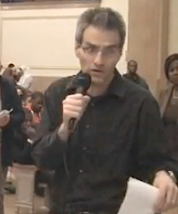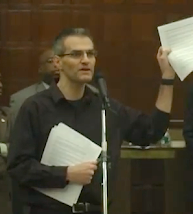VIII: A distorted school system
The NYCDoE has adopted a clear policy of further balkanizing a school system already divided by ethnic, class, and income levels, instead of providing resources and programs to help struggling students and schools.
Through a process of threatening, punishing and closing down “marked” schools (starting with large neighborhood high schools) and siphoning off the better behaved and higher performing students by offering them places initially in small, boutique schools and now increasingly in charter schools, a finely tuned system of sifting students and shifting resources to the favored schools has been established.
The actions of the DOE are a naked attempt to create failures. They penalize some schools with lower test scores and high numbers of special needs students by limiting funds and manipulating student enrollment, creating either vastly underutilized buildings or dangerously overcrowded conditions. A comparison of the school system today with a decade or more ago would clearly show that the lowest achieving and needy children, mostly black and Latino students living in poverty, are still afforded fewer options and resources. There are greater numbers of dropouts, and ever-increasing numbers of students are forced to attend overcrowded and underfunded schools further and further from their homes.
Along with an increased segregation of students is a closing off of opportunities for people of color to become teachers The DoE has not only reduced the number of paraprofessionals and dismantled the career ladder program, it has given priority in hiring to Teach for America corp members, Teaching Fellows, and the New Teacher Project recruits, who more often than not come from more privileged backgrounds than the traditional teaching force.
While the Fellows program has provided many talented and committed teachers to the school system, it is necessary to put greater effort into recruiting more people from the NYC area who are tied to the black and Latino community. One way would be to focus on teacher recruitment out of the CUNY system instead of favoring short-term teaching prospects from Ivy League schools.
The DoE’s closing of targeted schools and the shrinking of neighborhood elementary and middle schools (through the creation of charter schools) has generated an army of excessed teachers, termed Absentee Teacher Reserves (ATRs). These educators, most of whom remain substitutes instead of being placed in positions to help reduce oversized classrooms, have had their careers prematurely truncated.
The ATRs who have not been able to secure new positions have been impeded by a number of factors, including the disincentives and contractual give-backs that encourage principals to hire the least experienced, lowest paid teachers. In addition, a campaign spearheaded by corporate-led programs like the Leadership Academy for principals to malign, harass and punish staff members has had a disproportionate effect on both senior teachers and teachers of color, who comprise a large number of staff in the so-called failing schools.
All children — white, black, Latin, Asian — benefit from exposure to a diverse teaching staff. Schools are in a unique position to promote understanding between various ethnic groups and reduce prejudice. Sending teachers of color almost exclusively to schools that are predominantly black is a missed opportunity. An end to segregated staffs where black teachers teach black children and white teachers teach white children is something we should strive for.
When the DoE uses organizations such as Teach for America as a principal recruiter for new teachers, it undermines the very nature of what we do. The DoE’s plan is to put “talented” college graduates into inner-city classrooms for a couple of years before they move on to other jobs. Staffing schools with so many inexperienced and insufficiently prepared teachers creates a transient, unstable work force and is certainly not the way to improve public education. Teaching, as a profession involves long-term service to children and is certainly enhanced by staff with strong ties to the communities in which we work. To this end, we call for a reinstatement of the career ladder program and other career supports for paraprofessionals and school aides who accumulate years of experience working with children on their way to becoming vital members of our teaching staffs. As unionists, teachers and parents, we are well aware of the crucial role that we can play as a united force in fighting for the kinds of schools that meet the needs of all our students.
Monday, October 12, 2009
ICE platform, Part VIII
Subscribe to:
Post Comments (Atom)













No comments:
Post a Comment